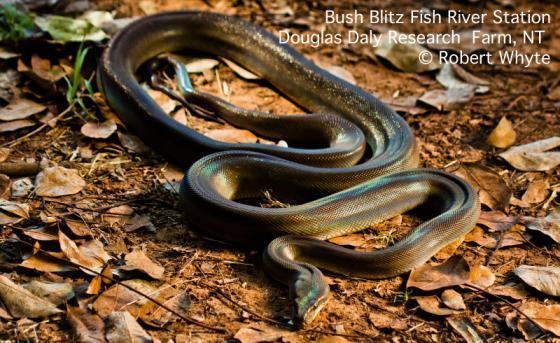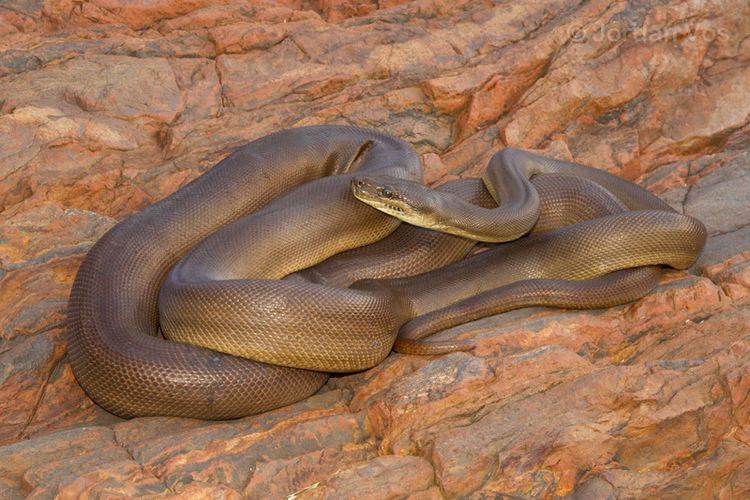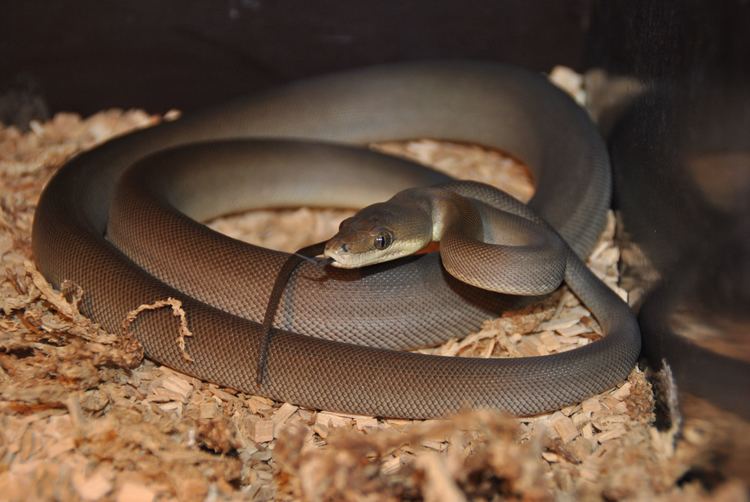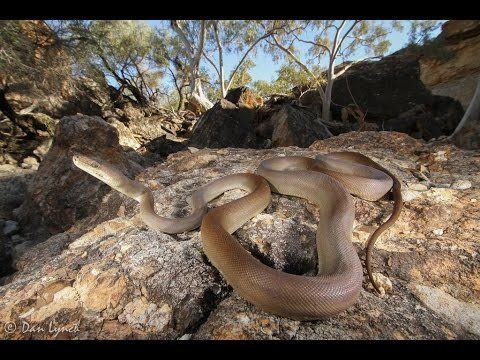Kingdom Animalia Subphylum Vertebrata Suborder Serpentes Scientific name Liasis olivaceus Rank Species | Phylum Chordata Order Squamata Genus Liasis Higher classification Liasis | |
 | ||
Similar Snake, Python family, Liasis, Reptile, Apodora | ||
Liasis olivaceus or olive python
Liasis olivaceus, commonly called the olive python, is a python species found in Australia. Two subspecies are currently recognized, including the nominate subspecies described here.
Contents
- Liasis olivaceus or olive python
- Description
- Geographic range
- Habitat
- Feeding
- Reproduction
- Captivity
- References

Description

With adults reaching over 4 m in length, this is Australia's second-largest snake species (surpassed only by the scrub python). Its high midbody dorsal scale count, 61-72, makes the skin look smoother than that of other pythons. The number of ventral scales is 355-377. The colour pattern is a uniform chocolate brown to olive green, while the belly is usually cream coloured.

Unfortunately, this species is occasionally confused with the venomous king brown snake, Pseudechis australis, and is often mistakenly killed.
Geographic range

This snake is found in Australia in Western Australia, Northern Territory and Queensland. The type locality given is "North Australia; Port Essington" (Northern Territory, Australia).
Habitat

It occurs in rocky areas, gorges and especially rocky areas near sources of water. Typically, shelter is sought in caves and rock crevices, but individuals have also been found in hollow logs and in burrows under rocks.
Feeding

The diet consists of birds, mammals and other reptiles, including rock-wallabies, fruit bats, ducks and spinifex pigeons. They prefer to lie in wait next to animal trails to ambush their prey. Alternatively, they are strong swimmers and also hunt in waterholes, striking at prey from under the water. They are also known to prey on monitor lizards and crocodiles.
Reproduction
Mating activity starts in May and continue through until mid-July. When successful, this is followed by a gestation period of 81–85 days, after which the oviparous females lay 12-40 eggs in late spring. The average clutch size is around 19 eggs. The hatchlings emerge after an incubation period of about 50 days, each measuring about 35 cm in length.
Captivity
Olive pythons are often kept as pets and are bred in captivity. They are technically an advanced level species due to their size, habitat requirements and strong feeding response, requiring terrariums of a minimum of 8 feet long, by 3 feet high and 3 feet wide. However, if raised properly, they are noted to be friendly, curious and calm. It is generally recommended that in removing them from their enclosure that snake hooks be used so as to prevent the feeding response from being triggered, and once out, they can generally be freely handled calmly due to their placid nature.
